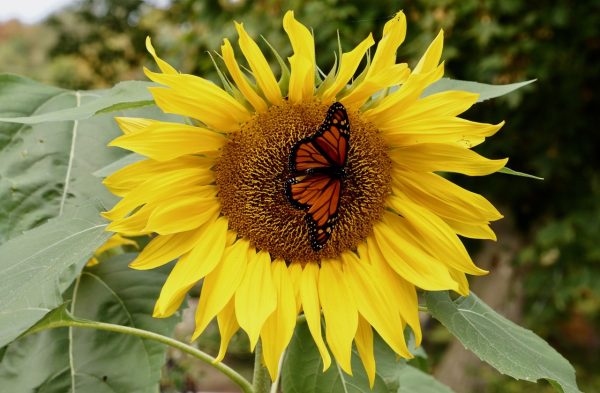In Buddhist tradition, Gautama once preached what is known as the “Flower Sermon,” which consisted of simply holding up a single flower and saying not one word. Through this silent, direct pointing to reality, one of his disciples instantly attained enlightenment. It was this disciple who went on to bring Buddhism to China and so became the first patriarch of Zen.
Jesus, too, preached a Flower Sermon: “Behold the lilies of the field: they neither labor nor spin. Yet I tell you that not even Solomon in all his splendor was dressed like one of these” (Matthew 5:29). Interestingly, scholars have determined that the lilies Jesus knew were not the large opulent white flowers we associate with Easter, but rather were common wildflowers similar to buttercups.
Has the Holy Spirit ever preached a flower sermon to you? This happened to me, and that one experience has stayed with me more deeply than any sermon of words I have ever heard. I was sitting outside on the porch, having my morning quiet time, when I chanced to notice a pot of gerbera daisies. At the time I was embroiled in some complex problem; I forget what it was, but it had something to do with prayer and my relationship to God. It was a sunny day, and my gaze focused on a single one of the flowers, a bright yellow one, and I thought: This little flower is so beautiful, so perfect, and yet it isn’t doing anything except gazing at the sun and drinking in its light. And right there was the answer to my problem: All God wanted of me was to look at Him, to bask in His presence and absorb His light.
This turned out to be a watershed experience in my prayer life. Ever since then, the way I pray has become more and more simple, more and more relaxed, and I find it increasingly easy to enter into the Lord’s presence and to receive all I need for facing life’s challenges.
The strange thing is, I’ve never thought of myself as particularly fond of flowers. I’m not a gardener, and it’s an effort of will to try to remember to buy flowers for my wife. She loves flowers, whereas for me, my preference is grass. I love the elegant simplicity of a long, sinuous stem of bluegreen grass. Like Walt Whitman I can “lean and loaf at my ease, observing a spear of summer grass.” Flowers, on the other hand, seem to me so flamboyant that I tend to overlook them; they’re too bright and showy, too in-your-face. Maybe that’s why, when I do notice a flower, it really pops.
For the fact is, flowers have continued to preach to me. One Easter, for example, all through Passion Week my eye kept being drawn to the magnolia in our backyard, as I marveled at the gradual eruption of huge pink blossoms. Where does it come from, all this beauty and color and glory? It was as if I were seeing the emergence of flowers for the first time.
And the other day I noticed a strikingly blue flower growing just outside the border of our garden. My wife has put a lot of work into making that garden beautiful, but on this occasion all I noticed was that one rogue flower flourishing where it shouldn’t have been, sprouting from a crack between two stones on the path. My wife identified it as a lobelia, and since we don’t have lobelia in the garden, she guessed the seed must have dropped from one of her hanging baskets on the balcony. How it spoke to me: the pure, delicate blueness of that blossom, like a fleck of summer sky fallen to earth! A line from a hymn came to mind: “God paints the wayside flower, He lights the evening star.”
If I wanted to, I could extract a moral from this story of the lone rogue flower that was more beautiful than any of those in the garden—maybe something about the gift that outsiders bring to our society, or about the value of coloring outside the lines, etc.
But with flower sermons, it’s probably best not to try to derive any lesson, but just to let the flowers be flowers, and look and listen.
Photos by Karen Mason
Next Post: The Squeaky Wheel: Wheedling God

